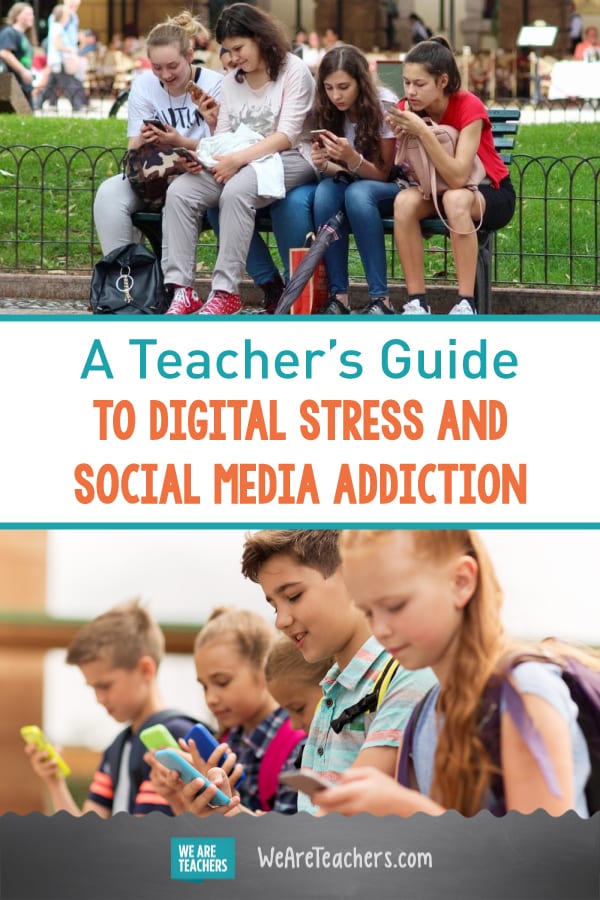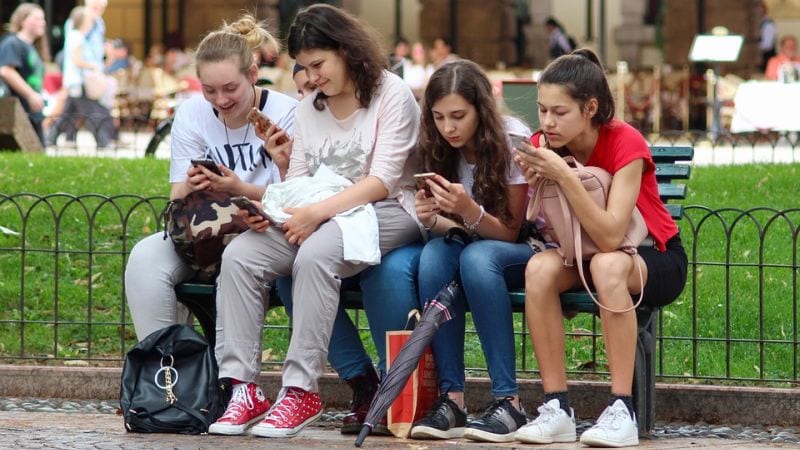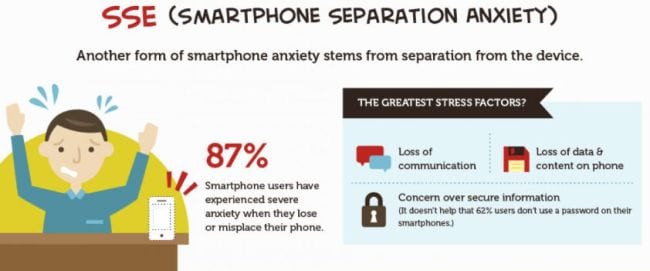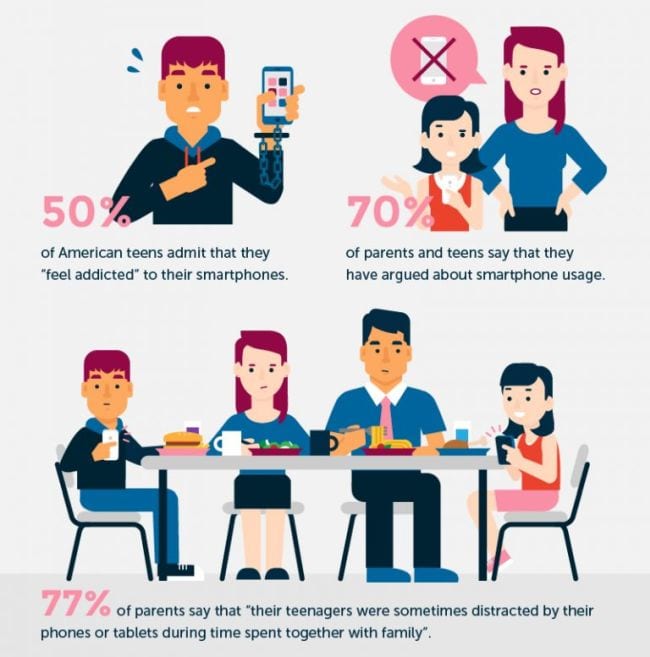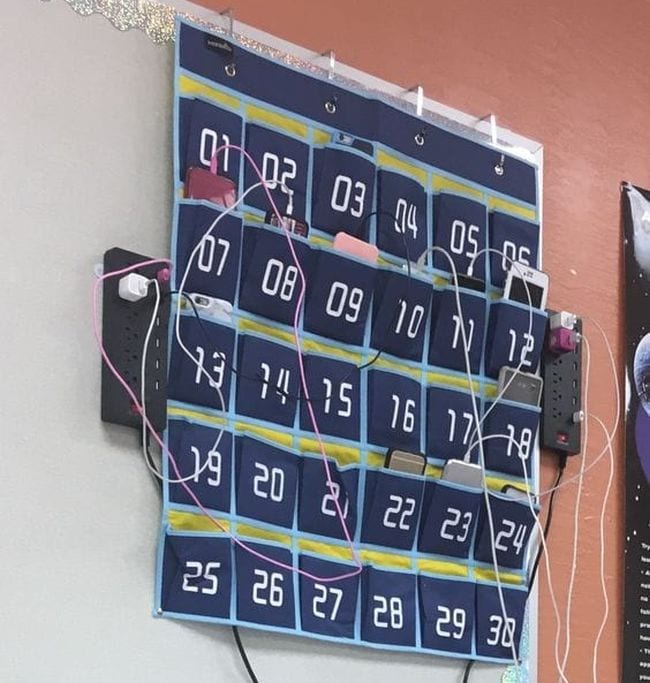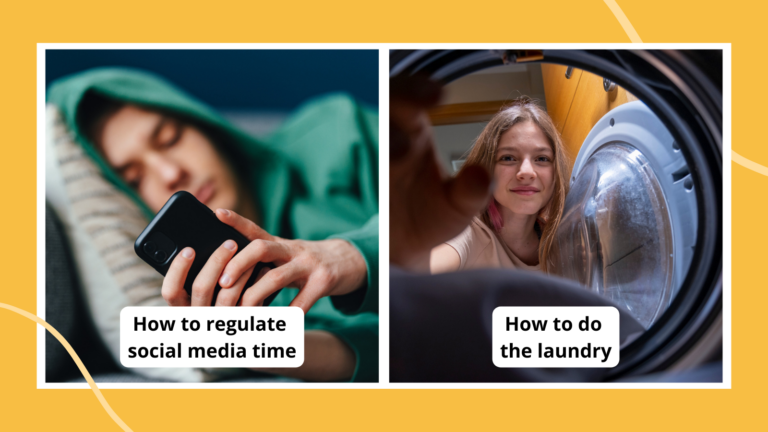Ever feel like you’d have better luck getting your class’s attention if you conducted your lessons via Snapchat? You’re not alone. Teachers know that kids are tied to screens like never before, and they’re seeing the effects of digital stress on a daily basis. Some might even wonder if their students suffer from social media addiction. Here are some ways you can help.
What is digital stress?
If you have a smartphone (and who doesn’t?), chances are you’ve experienced digital stress. The very apps that are supposed to bring us pleasure and relaxation (Instagram, Pinterest, Facebook) can wind up causing anxiety, loss of self-esteem, and endless FOMO (fear of missing out).
Social media and messaging apps make us feel like we must be constantly engaged online. The internet has opened up the world, allowing connection that’s never been possible before. If we want, we can be in touch with someone every minute of every day. But that also leads to obsessive behavior, like checking your phone every few seconds to see if someone has responded to your text message or how many people liked your latest Facebook post.
More than that, many people feel the need to show only their “best selves” when they post. Snapping a selfie on vacation for Instagram is fun. Snapping 75 different selfies just to find the best one to post is stressful. Browsing Pinterest to find interesting ideas for decorating your classroom is fun. Looking at all the so-called “perfect” classrooms out there and comparing them to your own is stressful.
And this doesn’t include the myriad problems that the internet itself created, including cyberbullying, “catfishing” and fake accounts, and loss of privacy. All in all, digital stress adds up for almost everyone.
Teens are especially susceptible to digital stress.
According to Savvy Cyber Kids, the average age for a child to get their first smartphone is 10, around fourth grade. While most parents monitor their kids’ usage, especially in the beginning, 39 percent of kids with smartphones have a social media account by the age of 11.
A study by the U.S. Department of Health and Human Services says teens spend two to three hours every day using their phones for leisure purposes (as opposed to homework or keeping up with current events). This doesn’t count the amount of time they spend texting. Teens love to stay in touch, but these days they’re not getting nearly as much face-to-face time. In contrast, they spend only 38 minutes a day socializing with friends in person.
What’s the difference between online interactions and in-person engagement? For one thing, it’s a lot easier to say things online you might not in person, especially if you can do it anonymously. Apps like Snapchat make it possible to send cruel messages that disappear a short time later and are hard to trace. Well over 30 percent of teens say they’ve been bullied online, known as cyberbullying.
Teens have always been susceptible to the need to fit in with others, which can be a big cause of digital stress. Girls especially tend to find it necessary to create the perfect online persona, which may or may not reflect their actual life. Kids at this age are still figuring out who they are; feeling like they have to be on display all the time is flat-out exhausting.
Is social media addiction real?
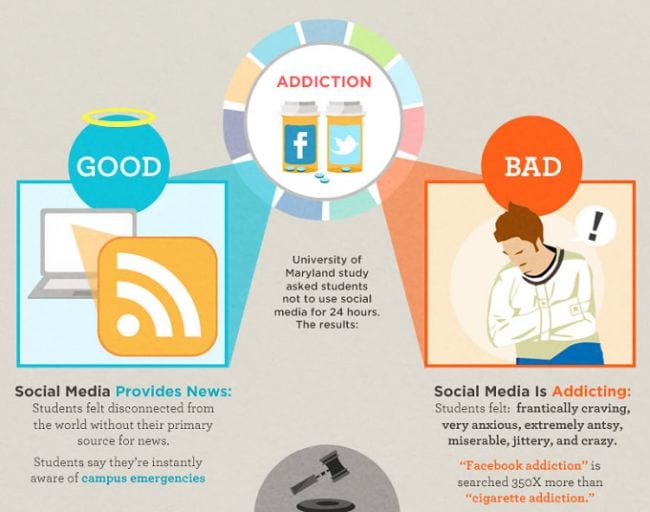
Source: Keep It Usable
Digital stress is a well-known phenomenon, but what about social media addiction? It’s a concept that’s still new to science and considered fairly rare. The term is used to describe those who are so tied to smartphones and social media that it completely disrupts their daily lives. As with other addictions, a good indication of social media addiction is the inability to quit using it even for a short time, no matter how hard you try. Psychology Today recommends a user ask themselves these questions:
- Do you spend a lot of time thinking about social media or planning to use social media?
- Do you feel urges to use social media more and more?
- Are there times you use social media to forget about personal problems?
- Do you often try to reduce your use of social media without success?
- Do you become restless or troubled if you are unable to use social media?
- Does your use of social media have a negative impact on your job or studies?
If you feel that a student is so wrapped up in social media that their grades are slipping or their health and well-being are suffering, be sure to alert their parents or your school’s mental health professional.
Learn how to help teens fight digital stress.
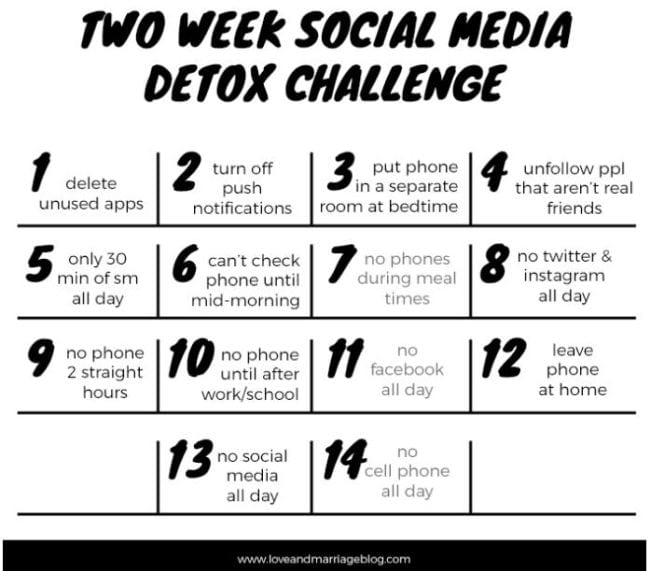
Source: Love + Marriage
Though social media addiction is rare, digital stress is prevalent among teens and can have negative effects on their lives. It’s important to start giving them the skills to handle their smartphones and social media use responsibly, because there’s no doubt both are here to stay for the foreseeable future. Here are some steps you can take with your students.
Make your classroom a phone-free zone.
Many schools and teachers already have rules about cell phone use at school. If yours doesn’t, now’s the time to start. Have students “park” their phones at the beginning of class in a safe space (and don’t trust them to keep phones in their bags or pockets!). Try these clever ideas—bonus points if you can set up charging stations. Oh, and teachers? This goes for you too, which brings us to our next point.
Model responsible smartphone and social media use.
When the bell rings, put your own phone away and let students see you do it. Resist the urge to check it during class. Pick it up only if you’re using it for something related to your lesson: setting a timer, playing music, etc. Otherwise, leave it be.
It’s best for teachers not to interact at all with students on social media, but if you have a professional account you use for school stuff only, curate it carefully. Make your posts meaningful and be careful about whom you follow. Get more tips here.
Phone messages can be a good way to interact with students and parents, but never give them your personal cell phone number. Instead, use an app like Bloomz or Remind.
Talk about digital stress with your students.
Let students know that digital stress is a real thing and that they have options for dealing with it. Talk about ways to limit their smartphone use, how to be safe online, and the importance of remembering to live in the “real world” too. This lesson plan from Media Smarts is a good place to start.
Your students might be surprised at how nice it is to take a break from their phone from time to time. So often, kids at that age are longing to make better decisions but are reluctant to do something that makes them different from everyone else. When you take the decision away from them during class and show them how to use social media responsibly, you’re helping them set up a better pattern for the rest of their lives.
Phones and social media in school are tricky subjects. Get more tips on how teachers can navigate social media in the classroom here.
How do you help your students deal with digital stress and the effects of being part of the smartphone generation? Come talk about your experiences on the WeAreTeachers HELPLINE group on Facebook.
